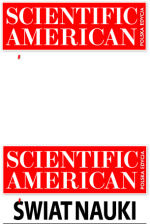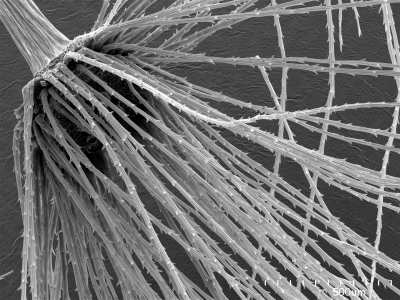 2006
2006
 2008
2008
 2010
2010
 2012
2012
 2014
2014



 |
Pieniny dandelion – an uncommon relative of common dandelion
‘Cyto-/embryological study on the Pieniny Dandelion Taraxacum pieninicum Pawł.’
Bartosz Płachno – author of photographs and project manager
“Dandelions, and only the wind ....” – Achene’s parachute of the Pieniny dandelion Taraxacum pieninicum Pawł. (tertiary relict of Pieniny Mts.). The pictures were taken in the Scanning Microscopy Laboratory of Biological and Geological Sciences, Jagiellonian University using HITACHI S-4700 microscope, 07.05.2012 Cracow |

|
Description popularizing the research project
Within the Carpathian Mountains, one of the biggest ranges in Europe, the Pieniny mountain range really stands out. They are relatively low mountains on the border between Poland and Slovakia with many unique characteristics: geological structure, pleasant and rather sunny climate with little rainfall, and landscapes. Maybe that is why, in the relatively small area, so many relic and endemic species occur. The most famous one is the Mountain Apollo butterfly, yet almost each group of plants or animals inhabiting near Three Crowns may have representatives of rare or endangered species.
Among the plants Taraxacum pieninicum Pawł., or simply a dandelion, is worth attention. It is a close relative of ubiquitous yellow flower infesting lawns, wastelands, sides of roads, cracks in pavements, even walls and gutters. The Taraxacum pieninicum Pawł. was considered extinct when a huge boulder destroyed its original location. Only the herbarium specimens remained. It would be an irreparable loss if the valuable, probably the oldest Tertiary relic and endemic species disappeared forever. Fortunately, it was found again on the slopes of Three Crowns. The plants, resistant to harsh mountain conditions, summer heat and lack of water, climbed over the height of 960 metres asl. There, reproducing by sexual means, which is rare among dandelions, they form a new population. Yet it does not mean that the danger is over. It is still in the Red List of Endangered Species.
The research on the dandelion is in progress. Maybe it will be possible to save the species in the mountains where it has been struggling for survival for at least 2 million years. May the falling rocks be the only danger to their population. As, so far they have dealt with it perfectly.
Abstract
The aim of the project is to conduct embryological, morphological and cytological research of the Pieniny dandelion Taraxacum pieninicum Pawł., which is a tertiary relict of Pieniny Mts. It grows only in the massif of Trzy Korony. Pieniny dandelion is included in the group of endan-gered plants in Poland. Our study included both herbarium specimens from the classic location of the species (locus classicus), collected by Prof. Bogumił Pawłowski in 1922, as well as plants from seeds collected recently. This study was partially funded by grant N N303 807940 from the National Science Centre.
Patronat honorowy
Leszek Jodliński
Dyrektor Muzeum Śląskiego w Katowicach
Zygmunt Łukaszczyk
Wojewoda Śląski
Jan Malicki
Biblioteka Śląska
Piotr Uszok
Prezydent Katowic
Adam Matusiewicz
Marszałek Województwa Śląskiego















